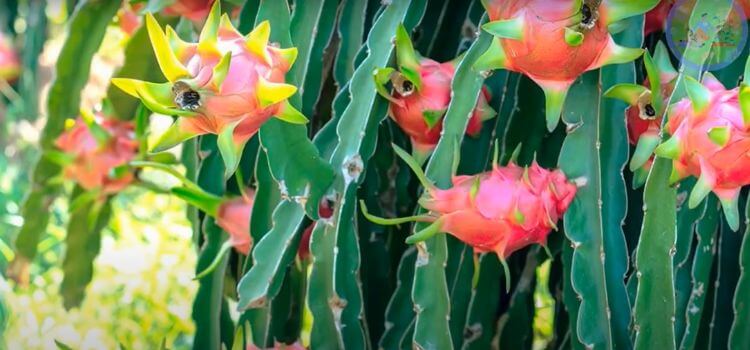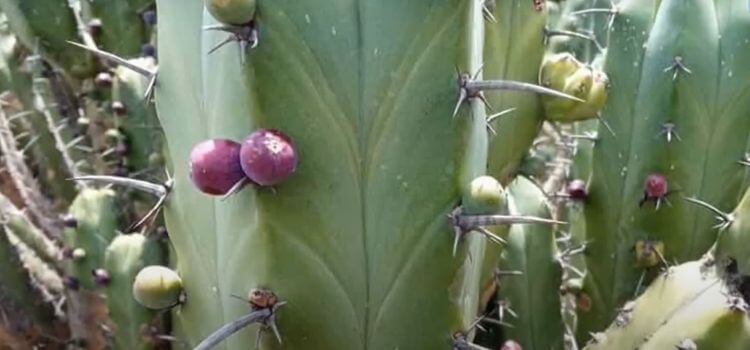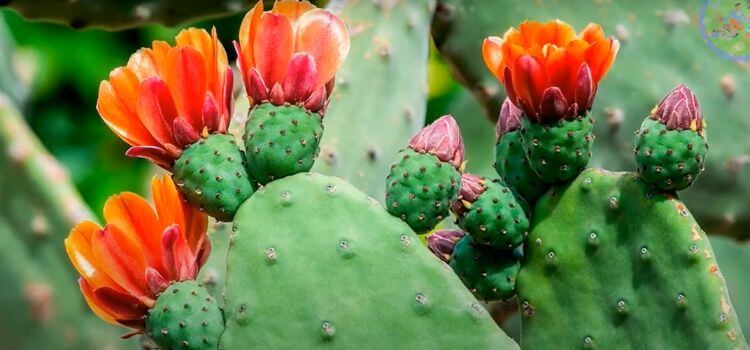As an Amazon Associate, I earn from qualifying purchases.
The Pereskia genus is one example of cacti that are not safe for consumption. Some cacti species contain toxic substances that can be harmful if ingested.
Cacti are renowned for their distinctive, often prickly, beauty and their adaptability to arid environments. These succulent plants have gained immense popularity among gardeners and plant enthusiasts. While many cacti are known for their edible parts, such as the prickly pear (Opuntia) or the dragon fruit (Hylocereus), not all species are safe to eat.
Some possess sharp spines and toxic alkaloids that can pose serious risks to humans and animals. As interest in home gardening and natural food sources grows, it’s vital to recognize which cacti are not suitable for your plate. Always research or consult a botanist before sampling any part of a cactus not known for being edible.

Types Of Inedible Cacti
Not all cacti are a desert delicacy. While some are a survivalist’s snack, others are best admired from afar. Exploring the types of inedible cacti is crucial for safety and health.
Toxic Cactus Species
Some cacti contain toxic substances.
- Candelabra Cactus (Euphorbia ingens): Resembles a traditional cactus but is poisonous.
- Pencil Cactus (Euphorbia tirucalli): Its milky sap can cause skin and eye irritation.
- Peyote (Lophophora williamsii): Known for its psychoactive properties.
Physical Characteristics Of Inedible Cacti
Noting physical traits helps identify inedible cacti.
| Characteristic | Description |
|---|---|
| Spines | Dense, long, and sharp, making the cactus tough to handle. |
| Skin | It can emit a bitter or acrid smell, signalling non-edibility. |
| Sap | A milky or sticky sap that is an irritant if touched or ingested. |
Cultural And Historical Perspectives
Exploring the cultural and historical perspectives sheds light on cacti and their edibility. Not all cacti are safe to eat. Some hold great significance in various cultures, while others are strictly avoided.
Traditional Use Of Edible Cacti
For centuries, many cacti have served as food sources, particularly for indigenous communities. These communities possess a wealth of knowledge about which cacti are safe for consumption. They incorporate them into their diets, use them in salads, drinks, and even as medicine. The prickly pear cactus is one such well-known edible variety. Others play a crucial role as dietary supplements, particularly in arid regions.
- Nopales – common in Mexican cuisine.
- Fruit of Saguaro cactus – eaten by Native Americans.
- Dragon fruit – a delicious pitaya that grows on certain cacti.
Taboos Surrounding Consumption Of Certain Cacti
Some cacti are off-limits. They are either poisonous or hold spiritual significance. Sacred cacti, like peyote, have powerful psychoactive properties. They are for rituals, not food. Others may be dangerous to your health if consumed.
| Cactus Name | Reason for Avoidance |
|---|---|
| Peyote | Used in religious ceremonies. |
| Candelabra cactus | Toxic to humans and animals. |
| Pereskia | Lack of information on edibility. |
Different cultures know different rules about these plants. It is vital to respect these differences. Each cactus tells a story. It may be a tale of survival or a sacred script. We must listen to both.

Impact On Wildlife
The desert may seem barren, but it thrums with life partly dependent on various cacti species. When discussing whether a cactus is edible, it’s critical to understand the impact these plants have on local wildlife. Some cactus varieties offer vital resources for animals, while others can be harmful if consumed.
Cactus As A Food Source For Animals
Many animals rely on cacti for food. This reliance forms a crucial relationship within desert ecosystems. Birds, reptiles, and mammals find water and nutrition in cactus fruits and pads. For instance, the prickly pear cactus serves as a vital food source during scorching months.
However, not all cacti are safe for consumption. Some are toxic and can cause serious health issues in wildlife, stressing the importance of understanding which species serve as nourishment and which pose threats.
- Prickly Pear: Nutritious fruit and pads are eaten by many animals.
- Saguaro: Fruits provide food and water, especially in summer.
- Cholla: Some rodents eat their seeds despite their spines.
- Toxic Cacti: Certain species can harm unsuspecting wildlife.
Interactions With Ecosystem
The presence of cacti can influence the survival and habits of desert creatures. Not all cacti promote a flourishing wildlife population. Non-edible cacti form a barrier, often modifying the way animals move and forage.
These plants can unintentionally reshape the habitat, sometimes providing shelter but limiting the availability of usable plant life. The balance of the ecosystem hinges on which cacti proliferate and how animals adapt to their presence.
| Species | Effect on Wildlife |
|---|---|
| Edible Cacti | Supporting nutrition and hydration |
| Non-Edible Cacti | Restricting movement and food sources |
Understanding the balance between edible and inedible cactus species helps ensure the well-being of native animal populations. It also sheds light on the delicate interactions within desert ecosystems. This knowledge aids conservation efforts focused on preserving both plant and animal life in arid landscapes.

Health Risks
Not all cacti are friendly additions to your meals. Some pose serious health risks. It is essential to know which ones to avoid. This knowledge can protect you and your family from harm.
Toxic Compounds In Cacti
Several cacti contain toxic compounds that can be harmful. These substances may cause negative reactions in the body. The following are some of these compounds:
- Oxalates: Can cause kidney stones and tissue damage when ingested in high amounts.
- Alkaloids: These can affect the nervous system and may lead to hallucinations or nervous reactions.
- Saponins: They might disrupt normal cell function, possibly leading to gastric issues.
Potential Side Effects Of Consumption
Eating the wrong kind of cactus can result in uncomfortable side effects. Here are some common ones:
| Side Effect | Description |
|---|---|
| Gastrointestinal issues | Nausea, vomiting, and diarrhea may occur. |
| Skin irritation | Touching or eating certain cacti can cause rashes and swelling. |
| Neurological symptoms | Altered senses and coordination might result from toxin exposure. |
Be aware of which cacti are not for eating. Research before foraging or growing them for consumption. Your safety is paramount.

Frequently Asked Questions
To determine if a cactus is edible:
Research its species, as some are toxic.
Seek expert guidance and reference reliable sources.
Avoid cacti with milky sap, as they are usually poisonous.
Taste a small amount for any adverse reactions before consuming more.
Always prioritize your safety first.
Most cacti are not poisonous, but some may have toxic or irritating compounds. Always research and verify edibility before consuming any cactus species.
Most nopales from the cactus family are edible, although some may be more palatable and tender than others. Always ensure they are properly prepared to avoid consuming spines or irritants.
The Peyote cactus (Lophophora williamsii), containing the psychoactive compound mescaline, is illegal in the United States under federal law, except for specific religious use by the Native American Church.
Conclusion
Not all are safe for consumption, so it’s crucial to stay informed. This post aimed to educate on inedible cacti, serving as a helpful guide for enthusiasts. Remember, when in doubt, don’t ingest.
Thanks for reading, and stay curious about nature’s wonders!

